Posted: February 22, 2019 | Author: Jamie Spry | Filed under: Alarmism Debunked, Climate science, Climategate, Climatism, CO2, Empirical Evidence, Failed Climate Models, Fossil Fuels, Global Temperature, Green New Deal, Satellite Data, State Of The Climate, The Pause | Tags: "The Pause", Climate Change, Climate science, Climategate, coal, Fossil Fuels, Fukushima, Global Temperature, Global Warming, Global Warming Hiatus, Green New Deal, HELE, Japan, Japan Meteorological Agency (JMA), JMA, Prime Minister Shinzō Abe, Satellite Data, Ultra-Supercritical Coal Power Plant, Vijay Jayaraj, warming pause |
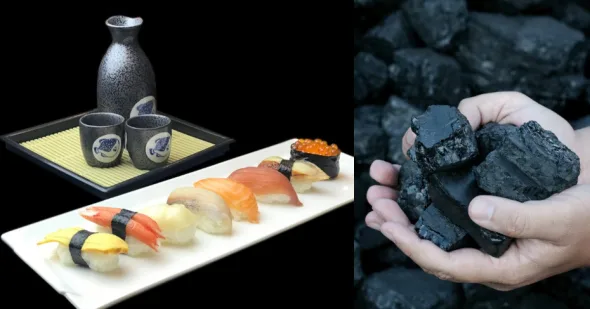
Sushi, Sake, and Coal: Japan’s Peculiar Response to the Climate Conundrum » BarbWire
“The fact is that we can’t account for the lack of warming
at the moment and it is a travesty that we can’t.”
– Kevin Trenberth, National Center For Atmospheric Research, USA (2009)
“Observations do not show rising temperatures throughout the
tropical troposphere … This is just downright dangerous.”
– Peter Thorne, Hadley Centre, Met Office, UK (2007)
***
THE Japanese government has identified and acknowledged the current ~20 year-long global warming “pause” or “hiatus”. The (inconvenient) atmospheric phenomenon that has been the subject of much research and debate in peer-reviewed scientific journals for many years now.
BASED on data from the Japan Meteorological Agency (JMA), the government has justified the expansion of its global-leading, ultra-supercritical HELE coal-fired power plant technology both domestically and abroad.
PRIME MINISTER Abe has sanctioned the addition of 35 new coal power plants to the 100 currently operational.
“Japan’s use of coal is not justified exclusively on the basis of the country’s nuclear debacle. The heart of the reason is Japan’s climate.
For the past three decades, there has been no significant warming in its major cities.”
*
CLIMATE Scientist Vijay Jayaraj reports (Climatism attachments, bolds added) :
Sushi, Sake, and Coal: Japan’s Peculiar Response to the Climate Conundrum
We all know that the Japanese love their sushi. Japan is also famous for sake, a rice wine unique to the country. Lately, the Japanese have shown unrestrained love for a commodity that is increasingly demonized by climate groups: coal.
Global warming alarmists blame coal for causing dangerous global warming. But the Japanese beg to differ. They have revived their love affair with coal. Why? That’s an interesting story.
Soon after the Fukushima nuclear incident, public sentiment towards nuclear energy became hostile. Many organizations, including foreign non-profits, called for the closure of nuclear plants on fears of future mishaps.
The Fukushima plant was outdated and less safe than Japan’s other, modern nuclear plants. Yet, the impact of the Fukushima disaster (in which no one died from radiation exposure) remains fresh in people’s minds, and the nation was not ready to defend the operations of other nuclear plants.
The Japanese government caved in to the pressure and closed many nuclear plants. By 27 March 2012, Japan had only one out of 54 nuclear reactors operating. As a result, the country was forced to seek alternative sources of energy generation.
The Japanese understood that renewable sources like wind and solar could not provide stable and affordable electricity, at least not in the magnitude necessary to meet peak energy demands of Japan’s power-guzzling cities.
The most economical and safe solution was coal. Contrary to popular belief and the mainstream media, coal is not as polluting as you might think.
Moreover, coal is a tried and tested source of energy, guaranteeing superior-quality, stable output to meet the energy demands of modern cities and industries.
With the development of “clean coal technology,” coal combustion now results in fewer contaminants and more energy, making it far superior to the combustion plants of previous decades.

HELE (High Energy Low Emissions) Ultra-Supercritical Coal Power Plant
So, Japan went against the tide and embraced coal with both arms.
It now employs the most advanced and safest coal combustion technology available on the planet, becoming a leading manufacturer and exporter of clean coal technology.
But Japan’s use of coal is not justified exclusively on the basis of the country’s nuclear debacle. The heart of the reason is Japan’s climate.
For the past three decades, there has been no significant warming in its major cities.
Data from the Japan Meteorological Agency (JMA) clearly indicates that there has been no significant deviation in the monthly average temperature between 1998 and 2018. The period between is of special importance to the Japanese government.
As per the climate doomsday theorists, temperatures should have displayed a strong warming trend as the manmade carbon dioxide emissions increased exponentially.
But the temperature levels failed to display any warming trend. That flies in the face of the notion that atmospheric carbon dioxide concentration levels control temperature over the island nation—or, for that matter, the world.
Last week, Sapporo recorded its coldest day in 40 years. In fact, winter in Japan had no warming trend from 1986 to 2018, with the January monthly mean temperature anomalies displaying a cooling trend. If anything, there has been a cooling trend in Japan between 1998 and 2018.
So, the reason for Japanese embrace of coal is pretty clear: no significant warming, coupled with the post-Fukushima anti-nuclear hysteria.
No country would want to reduce its emissions when its monthly average temperatures are actually decreasing. It is for this reason that Japanese Prime Minister Shinzō Abe refuses to stay true to the hasty anti-coal commitments he made at the UN’s international climate summits.
Instead of discouraging the use of coal, Japan is increasing its dependency on coal. Abe has sanctioned the addition of 35 new coal power plants to the 100 currently operational. The country is also encouraging its Asian neighbors and other developing countries to purchase its clean coal technology.
The Japanese response to the anti-coal establishment, besides being bold, accurately reflects climate reality. Japan understands the need to prioritize the domestic energy needs over faulty, pseudo-scientific forecasts of climate doom.
The lack of warming, however, is not limited to Japan. Satellite temperature measurements (between 1979 and January 2019) show no significant warming in the earth’s atmosphere during the past 19 years.
Other countries should emulate Japan’s example, especially in the developing world. Domestic energy needs are far too important to be slain on the altar of global warming hysteria.
Sushi, Sake, and Coal: Japan’s Peculiar Response to the Climate Conundrum » BarbWire

Vijay Jayaraj (M.Sc., Environmental Science, University of East Anglia, England), is Research Associate for and Contributor for Developing Countries, for the Cornwall Alliance for the Stewardship of Creation. He lives in Chennai, India.
FOLLOW Vijay on Twitter : @vjxxvj
***
REFRESHING to see government energy policy being driven by empirical evidence and real-world data, and NOT by fear, hysteria, mainstream media climate change advocacy and alarmism or politically-driven, CO2-centric, UN IPCC climate models.
BRAVO Japan for standing up to the climate groupthink bullies and misanthropic eco-activists. Instead, supporting their industry and citizens by providing them with cheap, abundant and clean (HELE) coal-fired power technology to advance and maintain their world-renowned pristine environment, civic cleanliness, health and wealth!
“The Japanese response to the anti-coal establishment, besides being bold, accurately reflects climate reality. Japan understands the need to prioritize the domestic energy needs over faulty, pseudo-scientific forecasts of climate doom.”
***
PIC of Kinkaku-ji Palace Kyoto from my recent family trip to ‘pristine’ HELE powered Japan!
IF you haven’t been to Japan – GO! Incredible people, culture and country…
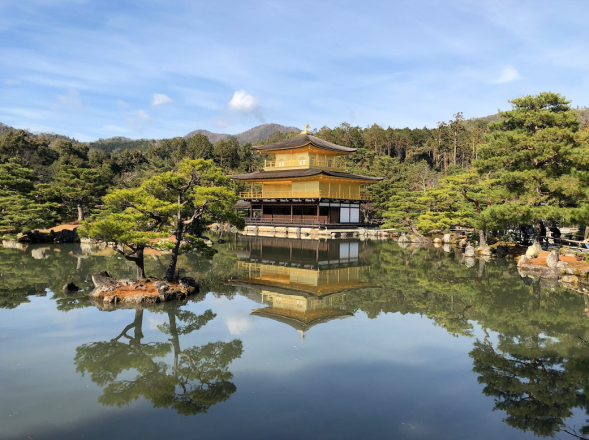
Jamie Japan Trip – Kinkaku-ji Royal Palace Kyoto – Jan 2019 (iPhone 8 – No filter!)
•••
SEE also :
Read the rest of this entry »
Like this:
Like Loading...
Posted: June 2, 2013 | Author: Jamie Spry | Filed under: Alarmism | Tags: Activists, Alarmism, Clean Energy, Energy, Fukushima, Japan, Nuclear |
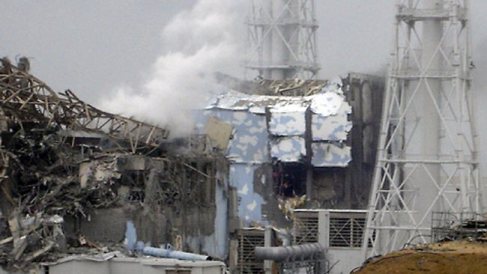
WHERE are those shameless nuclear hysterics who whipped up the Fukushima panic, now punctured by a United Nations report?
The UN Scientific Committee on the Effects of Atomic Radiation last week found none of the Japanese public is likely to get sick from the 2011 incident, when a tsunami smashed into the Fukushima reactor.
“It is unlikely to be able to attribute any health effects in the future among the general public and the vast majority of workers,” UNSCEAR it said.
“No radiation-related deaths or acute effects have been observed among nearly 25,000 workers . . . It is unlikely that excess cases of thyroid cancer due to radiation exposure would be detectable.”
Yet remember the free ride the media gave to anti-nuclear alarmists such as Helen Caldicott, who warned Fukushima could make Japan “uninhabitable”?
She told 3AW the reactor could blow (ruled out by nuclear experts), which meant “hundreds of thousands of Japanese will be dying within two weeks”.
Then there was Crikey writer Guy Rundle panting: “Japanese crews (fighting a fire at the reactor) will slough their skin and muscles, and bleed out internally under the full glare of the world’s media.”
The Nossal Institute’s Dr Tilman Ruff claimed “we might be looking at a Chernobyl-type disaster or worse”, causing mass sickness.
But the 1986 explosion at the Chernobyl reactor should already have warned us to dismiss such scares.
That disaster was hyped by activists such as Peter Garrett, now a Gillard Government minister, who claimed it “caused the deaths of more than 30,000 people”.
The Australian Conservation Foundation published a paper claiming 250,000 died. Caldicott said it was “nearly a million”.
In fact, the best assessment comes from the Chernobyl Forum, representing Ukraine, Russia and Belarus and relevant UN agencies.
“Claims have been made that tens or even hundreds of thousands of persons have died as a result of the accident,” it said.
“These claims are highly exaggerated.”
It could find only 65 known deaths so far, nearly half from the blast, and said there was no “clear and convincing evidence for a radiation-induced increase in general population mortality”. There was only one exception: thyroid cancer in children, which killed 15. Thankfully, this is treatable.
Fear was more lethal. The International Atomic Energy Agency estimated up to 200,000 European women were made so scared they aborted their babies.
Yes, alarmists are deadlier than radiation.
h/T ANDREW BOLT – Herald Sun: http://www.heraldsun.com.au/news/opinion/nuclear-panic-over-fukushima-reactor-just-hot-air/story-fni0ffxg-1226655433717
Like this:
Like Loading...
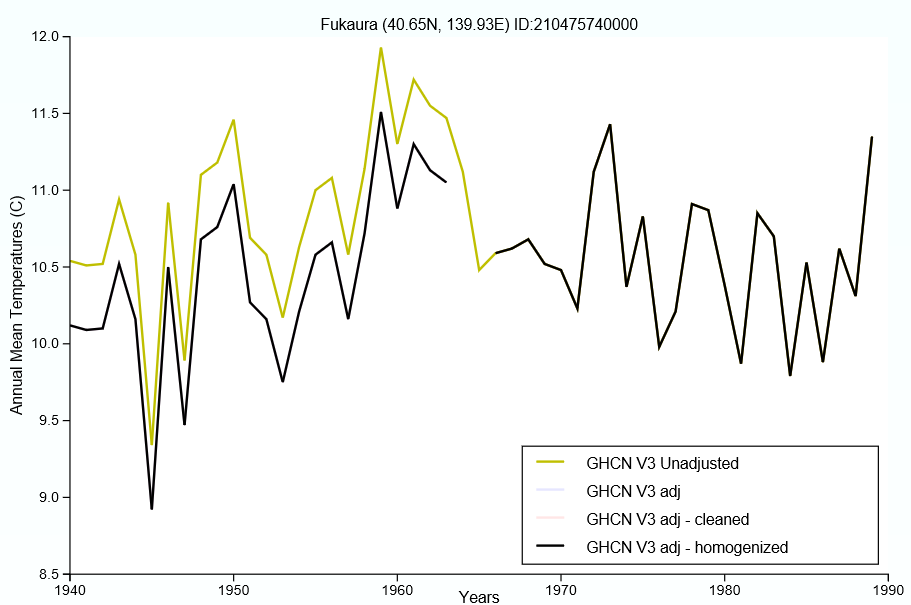 Fukaura showed cooling before NASA dropped the station in 1990. Image: NASA
Fukaura showed cooling before NASA dropped the station in 1990. Image: NASA





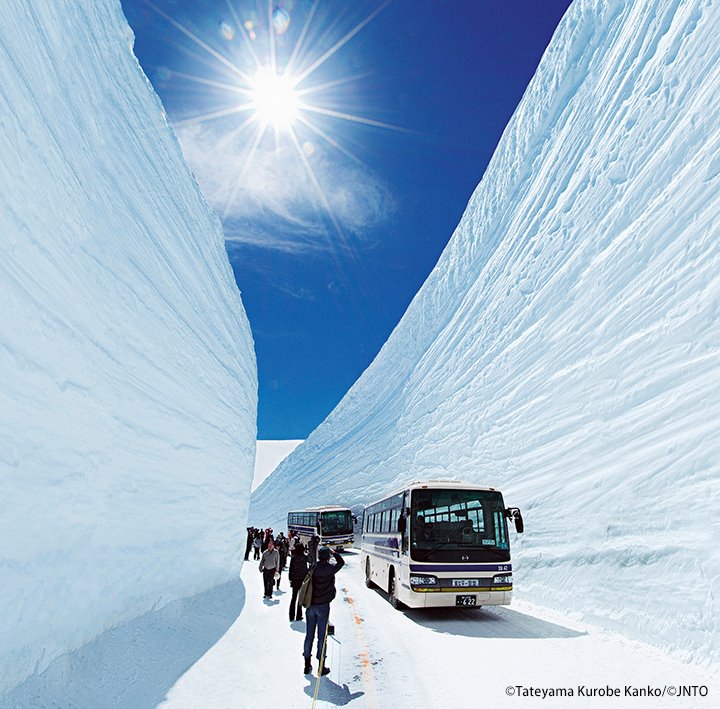



Recent Comments